Spray nozzles are one of the key components in the die-casting process, playing an important role in metal injection molds, cooling molds, spraying lubricants, and releasing agent sprays.
Die casting nozzles play a crucial role in the die casting process, and their design and selection directly affect the quality and production efficiency of castings. By selecting and using different types of nozzles reasonably, the efficiency and product quality of die-casting processes can be effectively improved. Meanwhile, with the development of technology, the design and functionality of nozzles are constantly being optimized to meet the needs of modern industry.
Die casting spray nozzles application mainly includes cooling and release fluid injection in metal casting, cooling in continuous casting and so on. It is mainly concentrated in the following 6 aspects:
- Cooling and release fluid injection in metal casting
- Cooling in continuous casting
- Wax injection in casting technology
- Molten metal spraying
- Special material spraying
- Applications in chemical processing
Cooling and release fluid injection in metal casting
During the metal casting process, spray nozzles use to inject high-pressure gas, water and release fluid. They used to increase the cooling rate and save the use of release fluid. The ability to independently control each nozzle helps optimize the casting process and improve product quality.
In aluminum die casting, the traditional approach is to mix the release agent and water and spray them onto the mold at once. However, this method can cause some water to evaporate and cool the mold, while another part flows down from the mold, resulting in waste of the release agent and water.
To solve this problem, some improvement measures adopt the method of spraying water and releasing agents separately. For example, by adding additional nozzle rows on the nozzle head, independent spraying of water and release agent can be achieved. This approach can significantly reduce the consumption of release agents and water, and lower emissions.
In addition, this technology can also optimize the cooling effect by controlling the independent action of the nozzle through computer control.

Cooling in continuous casting
In the continuous casting process, spray nozzles use to spray low-viscosity liquids for cooling. This application usually involves spraying a mixture of gaseous and liquid media to achieve efficient cooling.
The spray nozzle achieves rapid cooling by spraying high-pressure water or air-water mixture onto the surface of the slab. Its main functions include
Uniform cooling
By adjusting the flow rate, pressure, and spray angle of the nozzle, the surface temperature of the casting billet is ensured to decrease uniformly, avoiding cracks caused by local overheating or undercooling.
Control cooling intensity
The cooling intensity of the nozzle can be controlled by adjusting the water flow rate and air ratio to meet the needs of different billet thicknesses and casting speeds.
Preventing clogging
Modern nozzle designs typically adopt a large-diameter structure to reduce the risk of clogging from impurities and particles.
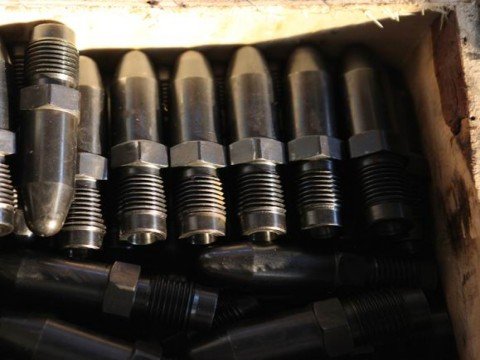
Wax injection in casting technology
In casting technology, nozzles are also used for wax injection to form the internal structure of the casting. This nozzle design enables greater control accuracy, thereby improving production efficiency and product quality.
Wax injection mold design
The design of wax injection molds should ensure accurate replication of the wax mold and facilitate subsequent die-casting processes. The mold should have good thermal conductivity to accelerate the cooling and demolding process of the wax mold. In addition, the structural design of the mold should consider the complexity and size requirements of the wax mold to ensure that it can be uniformly filled and quickly cured during the injection process.
Optimization of die-casting nozzle
After wax injection is completed, the wax mold will be used for die-casting process. At this point, the design and performance of the die-casting nozzle will directly affect the quality and efficiency of the casting. For example, T-shaped, X-shaped, or Y-shaped nozzles can be selected based on the complexity of the mold and the shape of the casting to achieve uniform molten metal filling and reduce turbulence. In addition, high-pressure nozzles can ensure stable flow of molten metal into the mold under high pressure, improving filling accuracy and casting quality.
Cooling and demolding technology
The wax mold after wax injection needs to be cooled and solidified in the mold for subsequent die-casting processes. The choice of cooling technology is crucial in this process. For example, using air or water cooling can accelerate the cooling speed of wax molds, thereby shortening the production cycle. At the same time, demolding technology should ensure that the wax mold can be smoothly removed from the mold, avoiding damage to the wax mold or affecting the subsequent die-casting process.
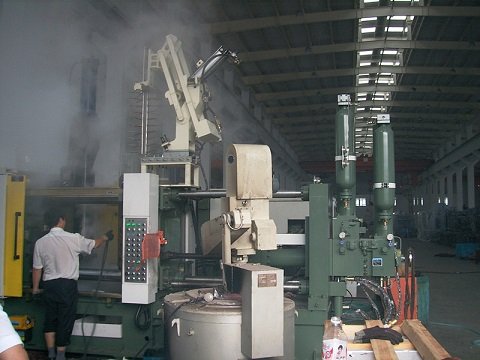
Molten metal spraying
Spray Nozzles also use in molten metal spraying. For example, in spraying equipment, through multi-stage automatic devices to improve the quality and structure of the spray deposition area.
Molten metal injection in die casting is not limited to metal injection, but also involves key processes such as mold cooling and release agent spraying.
Jet cooling technology
Principle: By rapidly cooling the mold core rod with high-pressure water/gas, thermal stress is balanced and defects such as shrinkage holes are reduced.
Advantages
Shorten cycle time (increase efficiency by 30%)
Extend mold life (reduce thermal fatigue cracks)
Energy saving (reducing energy consumption by 20% compared to traditional cooling methods)
Challenge
Real time monitoring system is required to prevent water and molten metal from mixing and exploding due to core rod fracture.
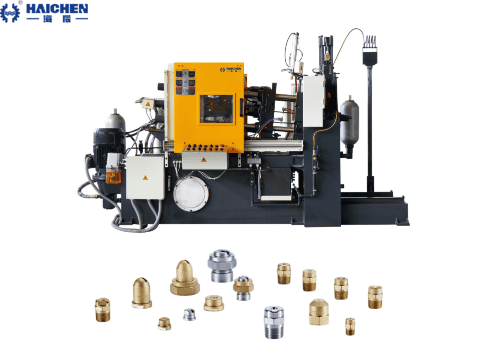
Special material spraying
The spray nozzle also uses for spraying special materials. Such as drying and processing of white carbon black, by atomizing the liquid into fine droplets through high-speed rotation and centrifugal force.
Applications in chemical processing
In chemical processing, spray nozzles use to directly connect product manufacturing processes, packaging, cleaning or sterilization equipment, and environmental control. The selection and use of nozzles has a significant impact on the final product quality, operating costs and maintenance time.
As above, spray nozzles widely use in foundry and other industrial applications, including cooling, spraying, wax spraying and chemical processing, etc. These applications improve production efficiency and product quality by optimizing spray characteristics, improving atomizing effect and control accuracy.
Haichen die casting machine
Haichen is one Chinese die casting machine manufacturer for more than 10years. We produce both high pressure cold chamber die casting machine and hot chamber die casting machine.They have durable and highly precise features.

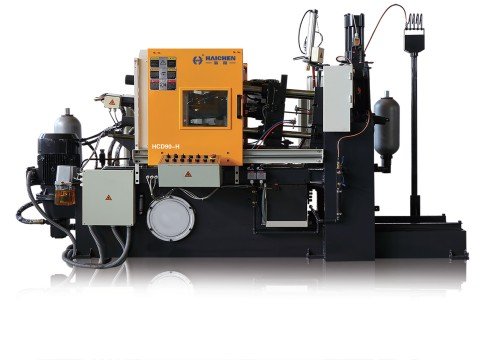
Haichen also produce die casting machine auxiliary equipment. Such as conveyor, vacuum machine, mold temperature controller, industrial robot, sprayer and so on.
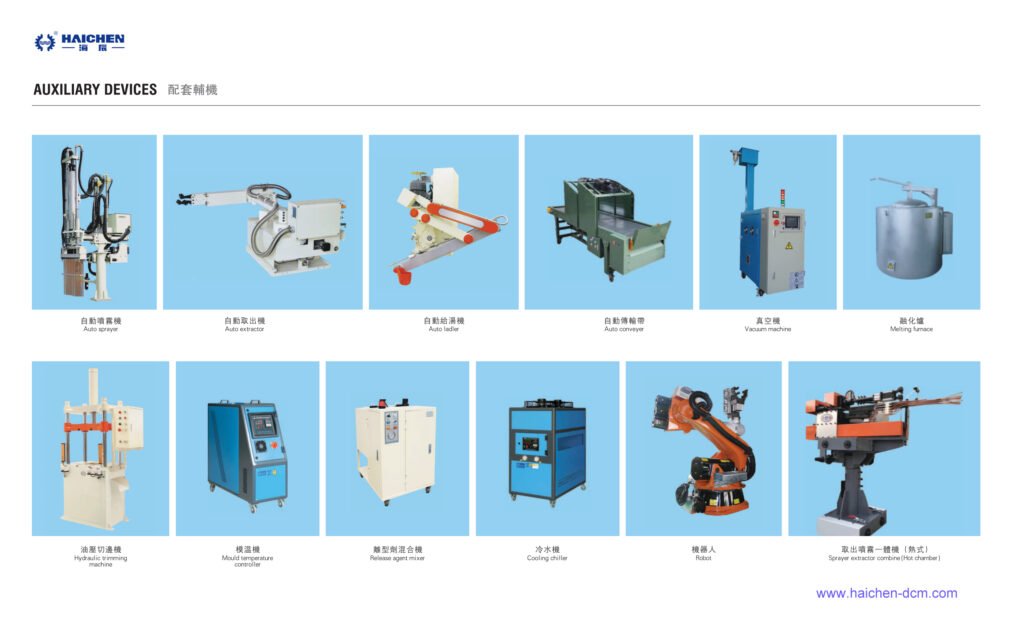
We supply cold chamber and hot chamber die casting machine spare parts. When you need any professional recommendations, feel free to contact us.



